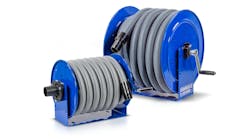The secret to easy and safe vehicle setup in six easy steps:
- Maintain a tidy shop. Clutter leads to accidents, so keep it clean.
- Know your capacity. Always double-check the weight of the heaviest vehicle you intend to lift. Make certain that the vehicle lift you select is ALI-certified to meet, or exceed, that threshold.
- Carefully measure the height clearance of the facility. That means, prior to selecting a lifting system, measure the ceiling height in the facility and also note the height of the tallest vehicle you plan to service on the lift. In that way, operators can determine if there is ample room to raise the vehicle to a serviceable height that in turn will permit a technician to comfortably work underneath the vehicle.
- Consider lift positioning. With mobile column lifts, always lift on a firm foundation on level ground. In addition, when lifting outdoors, be aware of wind loads. Also, make certain that all personnel are clear of the vehicle and that the wheels on the vehicle being raised are properly engaged with the forks on the mobile column lifts. For in-ground piston lifts, operators should check that the contact points are properly positioned. When starting to lift the vehicle, only raise it 12" off the ground. Then, pause the lifting process. Walk around the entire perimeter of the vehicle and do a visual inspection to ensure that all is good prior to proceeding.
- Select a lifting system that prevents unauthorized access to lift operation. This could take the form of a locked control box, a secure key code, or a “wand” -- necessary to activate the lift system prior to use.
- Select a lifting system that ensures stability. Look for “synchronization” that starts immediately when the lift goes into motion and continues through the full range of travel. Furthermore, examine the mechanical locking system on the lift and make certain it starts near the floor and continues right up the entire height of the lift.
Information provided by: Stertil-Koni



